Sony Announces New Xperia 1 II Flagship, Teases Xperia PRO
by Andrei Frumusanu on February 24, 2020 2:45 AM EST- Posted in
- Mobile
- Sony
- Smartphones
- Snapdragon 865
- Xperia 1 II
- Xperia Pro
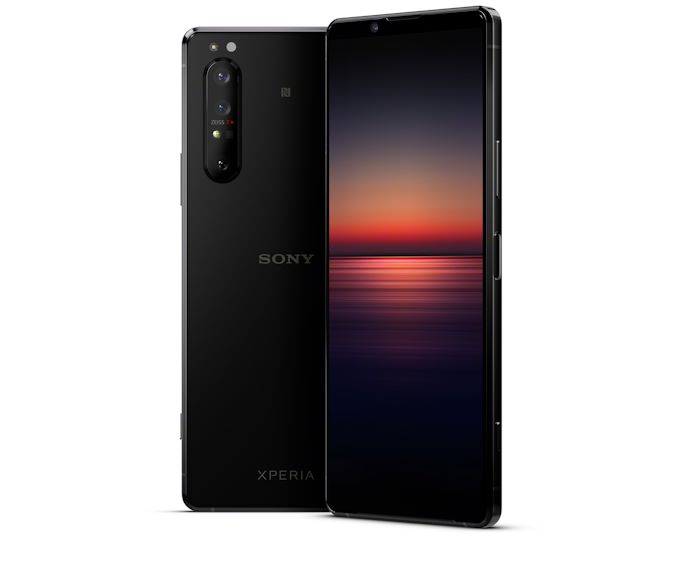
Today Sony announces the successor to last year’s Xperia 1 flagship phone, the new Xperia 1 II, as well as teasing a new interesting device in the form of the Xperia PRO, aimed at professional photographers.
The Xperia 1 was the first Sony flagship device that followed the company’s mobile division reshuffle under the head of Kimio Maki, former head of Sony’s Alpha mirrorless camera success. The new Xperia 1 II further embraces this new merging of product lines within Sony as we’re seeing new synergies between features that made the Alpha line-up of devices popular.
The Xperia 1 II also upgrades its hardware to be on par with what you’d expect in 2020: Powered by a new Snapdragon 865 SoC, brand-new camera sensors, as well as a seemingly 90Hz screen, all while packing a bigger battery, the new device on paper looks to be an upgrade in the right places, all while retaining the signature characteristics that made the Xperia 1 a differentiating device in 2019. There are also some surprises in the mix, some good, and some possibly bad. We see the return of the 3.5mm headphone jack, but an odd lack of 5G in the US variants of the phone. We’re be going over the specifications in more detail:
| Sony Xperia 1 Series | |||||
Sony Xperia 1 II |
Sony Xperia 1 | ||||
| SoC | Qualcomm Snapdragon 865 1x Cortex-A77 @ 2.84GHz 3x Cortex-A77 @ 2.42GHz 4x Cortex-A55 @ 1.80GHz Adreno 650 @ 587MHz |
Qualcomm Snapdragon 855 1x K485 (Cortex-A76) @ 2.84GHz 3x K485 (Cortex-A76) @ 2.42GHz 4x K485 (Cortex-A55) @ 1.80GHz Adreno 640 @ 585MHz |
|||
| DRAM | 8GB | 6GB LPDDR4X | |||
| Display | 6.5" AMOLED 3840 x 1644 (21:9) 90Hz (Interpolated?) |
6.5" AMOLED 3840 x 1644 (21:9) |
|||
| Size | Height | 166 mm | 167 mm | ||
| Width | 72 mm | 72 mm | |||
| Depth | 7.9 mm | 8.2 mm | |||
| Weight | 181 grams | 178 grams | |||
| Battery Capacity | 4000mAh 18W USB-PD Adaptive Charging |
3330mAh 18W USB-PD Adaptive Charging |
|||
| Wireless Charging | Yes | - | |||
| Rear Cameras | |||||
| Main | 12MP 1.8µm Dual Pixel PDAF 1/1.7" sensor 24mm / f/1.7 with OIS |
12MP 1.4µm Dual Pixel PDAF 1/2.6" sensor 26mm / 78° f/1.6 with OIS |
|||
| Telephoto | 12MP 1.0µm PDAF 1/3.4" sensor 70mm / / 3x zoom f/2.4 with OIS |
12MP 1.0µm PDAF 1/3.4" sensor 52mm / 45° / 2x zoom f/2.4 with OIS |
|||
| Wide | 12MP 1.4µm Dual Pixel PDAF 1/2.6" sensor 16mm / 130° f/2.2 |
12MP 1.0µm PDAF 1/3.4" sensor 16mm / 130° f/2.4 fixed focus |
|||
| Extra | 3D Time-of-Flight (ToF) | - | |||
| Front Camera | 8MP 1.12µm f/2.0 |
8MP 1.12µm f/2.0 |
|||
| Storage | 256GB | 128GB UFS 2.1 | |||
| I/O | USB-C 3.5mm headphone jack |
USB-C no 3.5mm headphone jack |
|||
| Cellular | 4G (US) 5G (Depending on market) |
4G | |||
| Wireless (local) | TBC | 802.11ac Wave 2 Wi-Fi Bluetooth 5.0 LE + NFC |
|||
| IP Rating | IP65 & IP68 | ||||
| Other Features | Dual Speakers | ||||
| Dual-SIM | 1x nanoSIM + microSD or 2x nanoSIM |
||||
| Launch Price | $949 / £849 / €949 | ||||
Starting off with the hardware, as expected we see the use of a new Qualcomm Snapdragon 865 SoC which puts the Xperia 1 II at the same level as other 2020 flagship devices. Sony has raised the RAM and storage configuration of the X1II, bumping it up to 8GB and 256GB by default (with no other options); the storage increase is particularly welcome.
Amongst the internal hardware improvements is a much bigger battery capacity, alleviating one of the Xperia 1’s largest weaknesses, upgrading from a 3330mAh unit to a 4000mAh new design, a 20% generational uplift.
The increased battery capacity didn’t have any large impact on the form-factor of the phone, as the new unit is only 3g heavier at 181g, and Sony even managed to reduce the thickness by 0.3mm down to 7.9mm. The width of the phone remains the same at a 72mm which is a sweet-spot in terms of ergonomics and usability, and Sony even shaved off 1mm in length down to 166mm. Sony even managed to add in wireless charging without any impact to the dimensions of the phone, also addressing the previous generation’s lacking thereof.
Characteristic Design, 90Hz Screen*, But Still 4K Resolution
In terms of design, the phone unmistakably follows its predecessor, characterised by the squared off corners of the 21:9 aspect ratio screen. The display panel unfortunately remains a 4K resolution panel – we deemed this feature to be a massive waste of battery life with little to no real-world benefits in terms of viewing experience. I hope Sony here at least is using a newer generation panel that’s able to increase the power efficiency of the display.
A new feature to the new screen though is what Sony calls “Motion Blur Reduction” feature that it advertises as equivalent to 90Hz displays. What I think this is a 90Hz panel which interpolates 60Hz rendering to create smoother content, which would be an interesting take on the high-refresh rate feature that we’ve seen being popularised over the last year by various vendors.
Sony has slightly changed the bezel / frame design of the new Xperia 1 II, which is now features a chamfer design and flat side-frame compared to the round frame of the Xperia 1 – we’ll have to see how this change affects the ergonomics of the phone.
The phone still has a dual-speaker setup two front-firing speakers with better immersive audio quality.
3.5mm Headphone Jack Resurrection
The most surprising feature change of the Xperia 1 II is the re-introduction of the 3.5mm headphone jack. Sony has said it’s seen bad feedback and a backlash from users on the Xperia 1 due to its headphone jack removal, and frankly, it’s was very much deserved. Sony is not only backtracking on the removal of the headphone jack, but it’s claiming to have improved the quality of the new 3.5mm output. Sony advertises its 360 Reality Audio processing engine being implemented in hardware, and I have to wonder if this means that the DAC of the phone is Sony’s own QN1 chipset (or similar), the same hardware that powered Sony’s popular WH-1000XM3 headphones.
Whatever the hardware may be, the fact that Sony is bringing back the headphone jack is a huge story in itself as it just proves how stupid the industry trend of removing the 3.5mm connector has been. Props to Sony for bringing it back – I hope other vendors follow suit.
New Camera Hardware – But Still Confused About What’s a Smartphone Camera?
The Xperia 1 II majorly upgrades its camera hardware. Starting off with the main unit, Sony has upgraded its sensor from a 1/2.6” unit to a much larger 1/1.7” sensor, this results in a pixel pitch upgrade from 1.4µm to 1.8µm, resulting in a 65% increase in light capture ability. The resolution has remained static at 12MP but I’m not too worried about that as what matters is the effective spatial resolution the sensor and optics can capture. The optics are now slightly wider at 24mm equivalent instead of 26mm equivalent on the Xperia 1, and the aperture is now at f/1.7 and OIS is maintained on the sensor.
The telephoto module seemingly hasn’t changed the sensor, which remains at 12MP with 1.0µm pixels, but sees a change in the optics which are now at 70mm equivalent, or 3x optical zoom compared to the main camera, a longer focal length than the 52 / 2x zoom equivalent on the Xperia 1. I do think this is a nice change as I find it such a focal length more useful. OIS is of course also integrated in the f/2.2 optics.
Finally, the ultra-wide-angle module remains the same in its field-of-view, but sees a huge upgrade in the sensor as it’s upgraded from a 1/3.4” sensor to an 1/2.6” unit, meaning pixel pitches have increased from 1µm to 1.4µm, all while retaining the 12MP resolution. The sensor is also PD-PDAF which is interesting, we haven’t had confirmation yet if this means the module now has variable focus – a feature that was lacking in the fixed focus optics of the Xperia 1 UWA module.
Sony discloses that they've partnered with Zeiss to be able to bring to market the optics of the new Xperia 1 II. If this is an improvement remains to be seen; the Xperia 1's optics sharpness was amongst one of the best on the market, and actually its one major strengths, with only the barrel distortion of the UWA being something to complain about, maybe Sony opted to go more rectilinear this generation?
Sony put a lot of emphasis on the autofocus capabilities of the new camera. The sensor is a dual-pixel PDAF unit and claims it covers 70% of the sensor, which is a bit odd as I thought PD-PDAF units had 100% sensor coverage. Sony also employs some of its AF knowledge from the Alpha 9 line-up to achieve 60fps autofocus and autoexposure calculations, and the phone is able to capture burst photos at 20 frames/second. It also includes the Alpha’s known eye-AF algorithms for humans and animals.
Sony integrates a new “Photo Pro” interface that aligns with what we’ve seen from the Alpha camera UIs.
Honestly, I feel that while all these feature additions are great, Sony’s largest problem historically is that they’ve been very bad at smartphone photography. Autofocus accuracy and speed matters very little in a smartphone if the image processing just isn’t up to standards, and the Xperia 1 last year showcased amongst the worst results of any phone we’ve tested in 2019. So, while the new Xperia 1 II looks good on paper, we’ll have to wait and see how the cameras perform in the real-world.
Launching in Spring – With No 5G in the US?
Arguably there’s no bad products, only bad prices, and the fact that the Xperia 1 II is launching in the US at $1099 without featuring any 5G connectivity is quite disappointing, and the company is off to a bad start versus the competition.
Update: We originally were briefed on the above pricing, but Sony has communicated that US availability and pricing are subject to changes, so the pricing might not be representative of the actual commercial launch price.
In Europe, the Xperia 1 II launches with 5G sub-6GHz at a staggering 1199€.
I’m not sure exactly what Sony did here in terms of hardware design, Qualcomm had confirmed the Snapdragon 865 is paired with the 5G capable X55 modem, so for a device to lack 5G means that Sony must have omitted the 5G RF in the design. I understand if it might have lacked mmWave, but also lacking sub-6GHz means it won’t be a future-proof device. Sony did say it will have 5G variants for other markets, but we don’t have further information on the matter at the time of writing.
Xperia PRO - a mmWave 5G Professional Photographer Oriented Phone That Makes Sense?
Alongside the Xperia 1 II, Sony also announced, or better say, pre-announced another new smartphone. The new Xperia Pro represents a new type of device that is targeted at professional photographers.
Hardware wise, the Xperia Pro shares almost all the specifications of the Xperia 1 II, with the difference of 512GB storage as default as well as the inclusion of 5G sub-6Ghz and mmWave connectivity.
Design wise, it’s a bit of a departure as it instead of the glass back and sleek metal frame it comes in a much more rugged casing that you’d expect from professional grade gear.
I said that the Xperia Pro makes a lot of sense, and the sole reason for that being is that the phone features an HDMI input port alongside its USB-C port. This is extremely unique in a smartphone and what this enables, is for photographers to connect their camera gear to the phone, and have the phone’s high-quality screen be used as a monitor.
Sony didn’t go into more details into the exact capabilities of the Xperia Pro’s HDMI input, but using the phone as a screen is merely just the starting point of what such a setup can bring – if the phone is able to record video off the camera source, this effectively then acts as an external video recorder, a piece of hardware that typically goes into the hundreds of dollars anyhow. Furthermore, if one can live-stream video content off your large professional camera and use the Xperia Pro as essentially a tethering device, it again opens up a lot of possibilities, and I think this is exactly Sony’s angle here with the 5G connectivity of the phone.
It’s a very interesting synergy for professional photographers who very well might justify whatever crazy price the Xperia Pro might end up at. For now, we’ll have to wait on Sony to divulge further information as the device isn’t due to launch till later in the year.


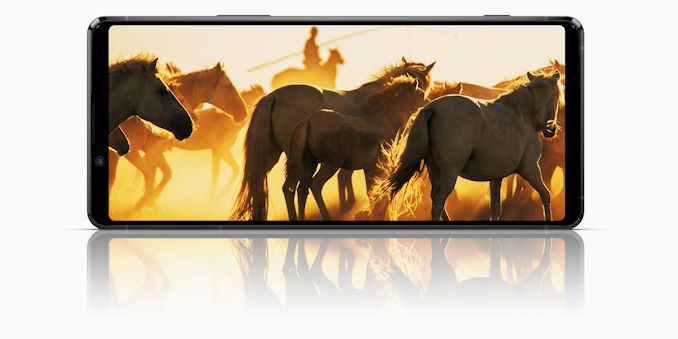
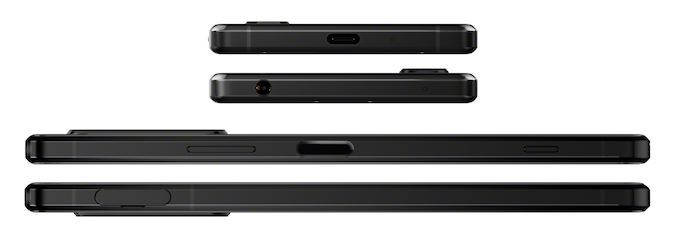
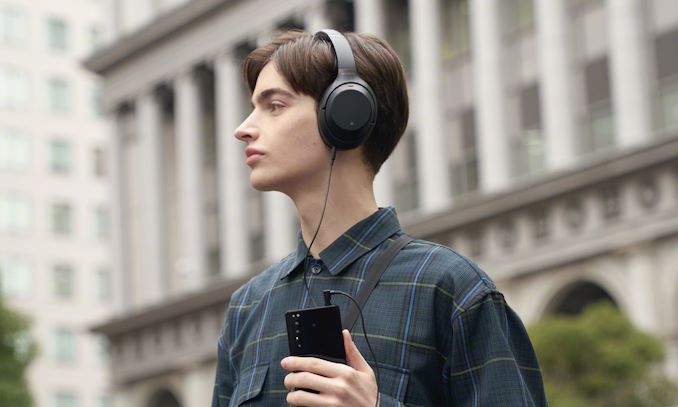
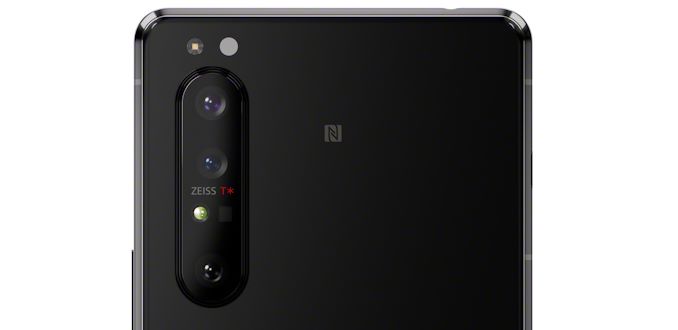
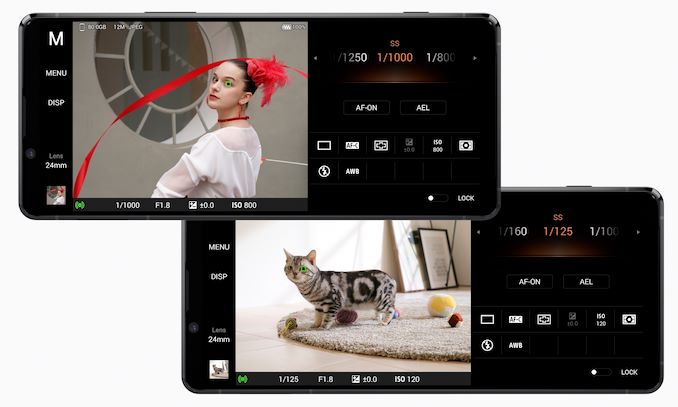
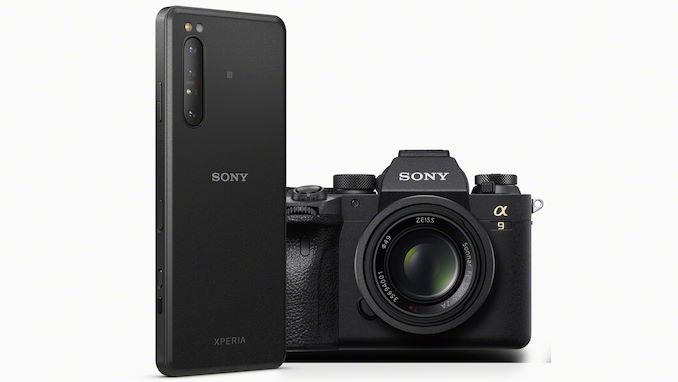
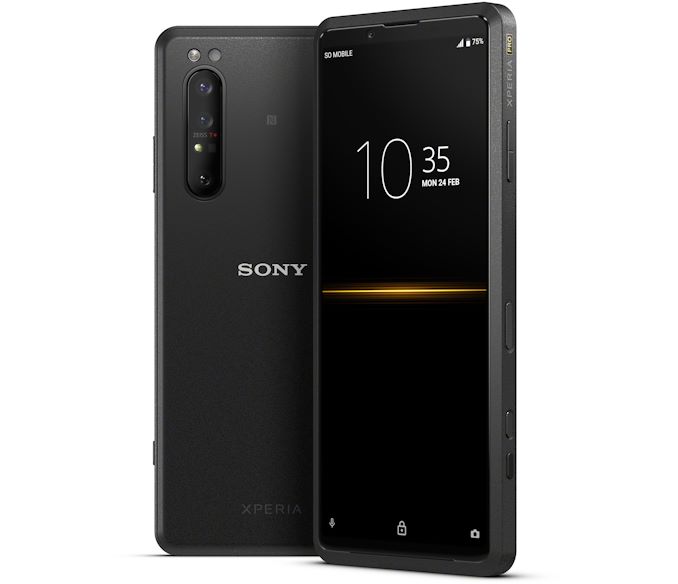
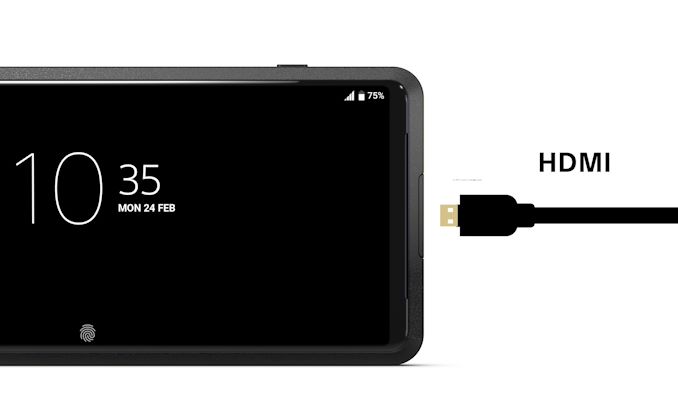
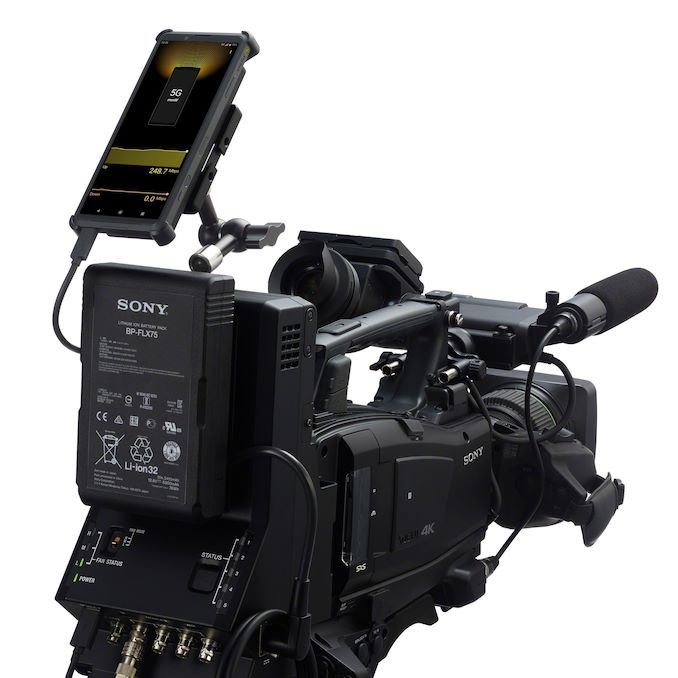








119 Comments
View All Comments
s.yu - Wednesday, February 26, 2020 - link
At this point, I could very well see the jack asking for $100 itself. No need for a dongle or a pair of $150 earphones that sound inferior.s.yu - Wednesday, February 26, 2020 - link
>$150 earphones$150 *wireless* earphones, edit, Anandtech...
Handstied - Wednesday, February 26, 2020 - link
Its crazy how pricey these things are. My last Sony phone was the xz premium. Prices keeps going up so I switched over to oneplus.BliTTzZ - Friday, February 28, 2020 - link
I strongly disagree with "Sony always had terrible smartphone cameras" opinion.They just should be treated differently, more like cameras and not smartphones. With basic knowledge you can shoot great pictures even with models like XZ1 or XZ2.
About naming: while it's a bit confusing, anyone who is familiar with their camera naming will understand. Also the lower the number the more advanced model is. This is true to all models but L4. And to be frank other brands naming is more messed up than Sony's.
Lolimaster - Friday, February 28, 2020 - link
Sony finally realizing how to Carter to it's niche marketNow we need bigger batteries, dc output a bit less bezels top/bottom AND 19:9 instead of the idiotic 21:9.
Brane2 - Saturday, February 29, 2020 - link
Does anyone even care for cutting-edge phone these days ?Why would one pay heavy extra for surveillance tool ?
And to pay for this $1k+ ?
Who needs 4K on 6 inch screen ?
One area where one would expect some innovation - phone openness and safety is constantly and consistently ignored.
If we had that, we could use phones as reliable, secure wallets, for example.
Does anyone even care for cutting-edge phone these days ?
Why would one pay heavy extra for surveillance tool ?
And to pay for this $1k+ ?
Who needs 4K on 6 inch screen ?
One area where one would expect some innovation - phone openness and safety is constantly and consistently ignored.
If we had that, we could use phones as reliable, secure wallets, for example.
Or have some extra Star Trek Tricorder sensorics that would be useful to more than Intelligence agencies and industrial syphoning of owner's privacy.
Standardised HW/SW interface for integration fo phone into or on other devices might be great idea.
Like that photo showing useage of phone with a camera, but as a generic standard and through seriously fast interface, say PCIex4 or somethign similar.
UltraWide - Sunday, March 1, 2020 - link
Sony is not even a competitor. They should just release 1 killer phone or just stick to making camera sensors. This isn't the 80s anymore, no one buys Sony for the name.inperfectdarkness - Tuesday, March 10, 2020 - link
No Compact version--so it's a hard pass. Sony had a LOCK on the sub 5" screen smartphone market.crotach - Saturday, March 14, 2020 - link
Lol what is going on with the phone prices? I'll need to take out a mortgage for the next generation.